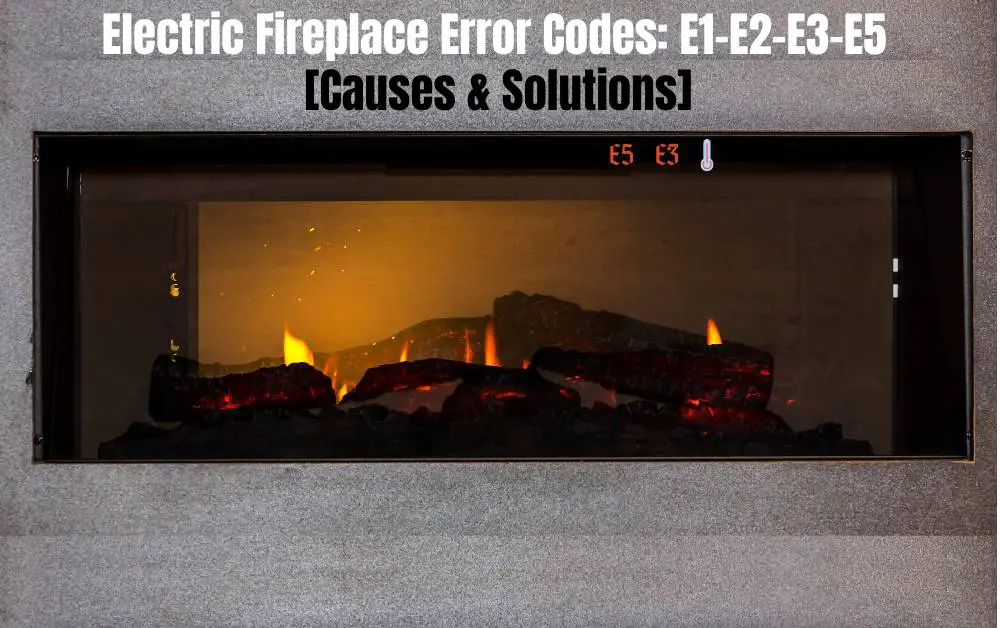In recent years, electric fireplaces have become a popular and convenient alternative to traditional wood-burning or gas fireplaces. While these modern marvels offer warmth and ambience, it’s crucial to understand and adhere to electric fireplace code requirements to ensure safety and compliance. So, what are the electric fireplace code requirements?
Understanding National Electrical Codes (NEC)
The first and foremost aspect of electric fireplace installation is compliance with the National Electrical Code (NEC). This set of standards, updated regularly, outlines the safe installation and use of electrical systems, including those powering electric fireplaces. Compliance with NEC is not just advisable but legally mandatory.
Electric Fireplace Code Requirements
- Circuit Sizing and Overcurrent Protection:
- Ensure that the electric fireplace is connected to an appropriately sized circuit.
- Use the correct overcurrent protection device (circuit breaker or fuse) based on the manufacturer’s specifications and NEC guidelines.
- Wiring Methods:
- Use approved wiring methods for the installation of the electric fireplace. This typically involves using a non-metallic sheathed cable (NM) or conduit, depending on the local code requirements.
- Outlet Placement:
- In the electric fireplace code requirements, its essential to install the electrical outlet for the electric fireplace in accordance with local building codes and NEC requirements. Consider the placement of the outlet in relation to the fireplace’s location to ensure a safe and convenient connection.
- Grounding:
- Ensure proper grounding of the electric fireplace as per NEC guidelines. This is important for electrical safety.
- Installation Clearances:
- Follow the manufacturer’s installation instructions regarding clearances around the electric fireplace. This includes maintaining specified distances from combustible materials.
- Listing and Labeling:
- Use electric fireplaces that are listed and labelled by a recognized testing laboratory. This ensures that the product meets safety and performance standards.
- GFCI Protection:
- In areas where the NEC requires GFCI (Ground Fault Circuit Interrupter) protection, ensure that the electric fireplace is adequately protected.
- Disconnecting Means:
- Provide a means of disconnecting the electric fireplace that is easily accessible and within sight of the unit, as required by NEC.
- Tamper-Resistant Receptacles:
- In accordance with NEC requirements, use tamper-resistant receptacles where outlets are accessible to children.
Keep in mind that specific requirements can vary by location, so it’s essential to check with your local building department for the most accurate and up-to-date information.
Related Post: Electric Fireplace Vs Central Heat
Essential Requirements For Using Electric Fireplace
Location and Clearance Requirements
One of the key considerations when installing an electric fireplace is its location within a living space. Maintaining proper clearances is crucial to prevent overheating and potential fire hazards.
As a general rule, electric fireplaces should be installed a certain distance away from combustible materials, such as curtains, furniture, and other flammable items.
Electrical Wiring and Circuits
Ensuring a safe and reliable power supply is paramount when installing an electric fireplace. All electrical work must comply with local building codes and standards.
It’s advisable to hire a licensed electrician to handle the wiring and ensure that the fireplace is connected to a dedicated circuit. This not only enhances safety but also prevents overloading household circuits.
Ventilation and Venting
Unlike traditional fireplaces, electric fireplaces typically do not require ventilation systems. However, certain models may come with specific venting requirements to dissipate heat effectively.
Follow the manufacturer’s guidelines regarding ventilation and ensure that the installation meets these specifications.
Building Permits and Inspections
Before proceeding with the installation of an electric fireplace, it’s crucial to check local regulations regarding building permits and inspections.
Many jurisdictions require homeowners to obtain permits for modifications that involve electrical work or changes to the home’s structure. Adhering to these requirements can save you from potential legal issues in the future.
Fire Safety and Emergency Measures
Even with electric fireplaces, fire safety should remain a top priority. Install smoke detectors and carbon monoxide detectors in the vicinity of the fireplace and regularly test them to ensure they are functioning correctly.
Additionally, having a fire extinguisher nearby is a prudent precaution.
Regular Maintenance and Inspections
To guarantee ongoing safety and compliance, schedule regular maintenance and inspections for your electric fireplace.
Check for any signs of wear and tear and promptly address any issues. Regular cleaning of the fireplace and its components is essential for optimal performance.
Energy Efficiency Considerations
Aside from safety and compliance, many homeowners are increasingly interested in the energy efficiency of electric fireplaces.
Look for models with energy-saving features, such as programmable thermostats and LED lighting, to reduce energy consumption and costs.
Related Post: Can You Plug an Electric Fireplace into a Power Strip?
Affiliate Disclosure: Fireplaceadviser.com is a participant in the Amazon Services LLC Associates Program. We may earn a commission when you click on certain links on this site and purchase.

Hello!! I am Jamal Khan. I often fix my home electric heaters and gas stove problems and research the common issues in the heating units to improve my knowledge and expertise. The aim of establishing fireplaceadviser.com is to share my expertise and knowledge with my audience.












